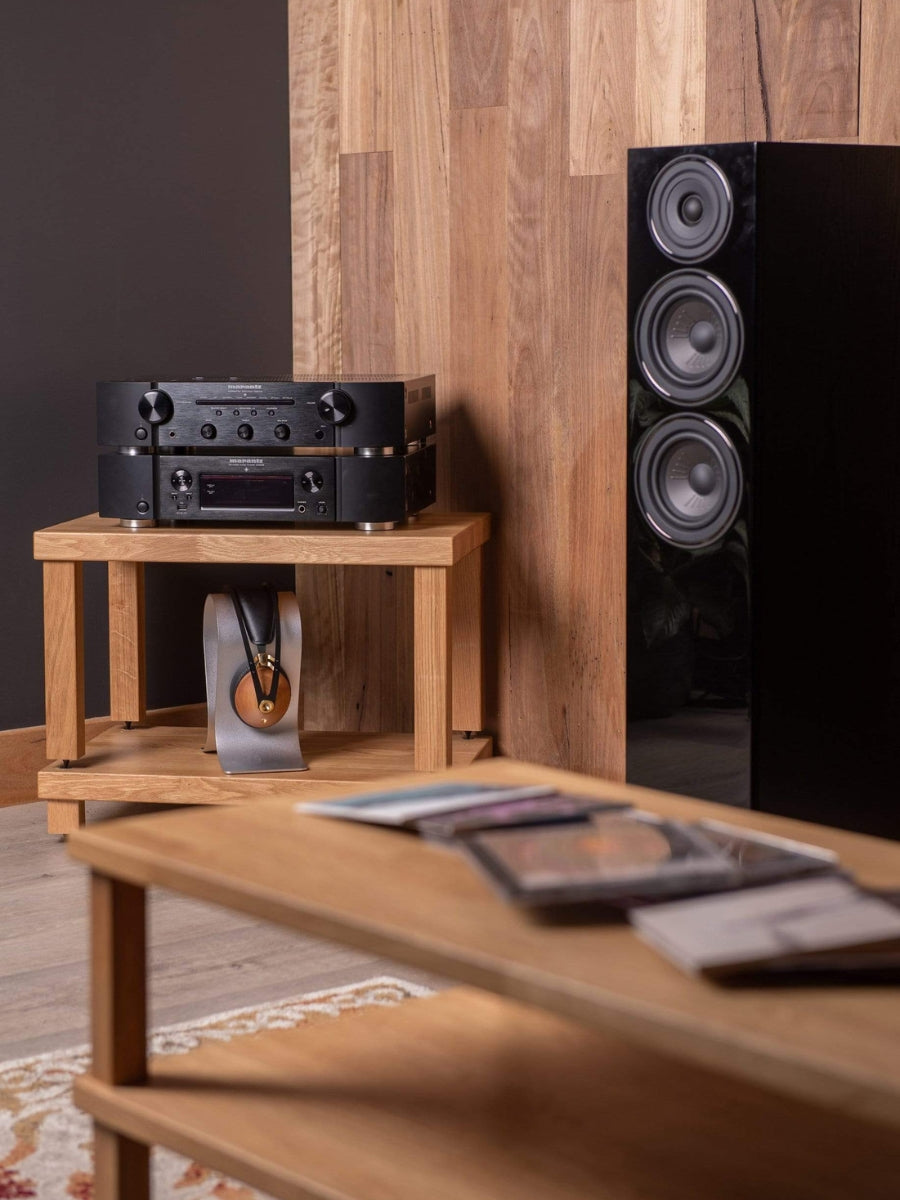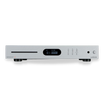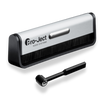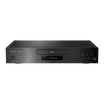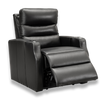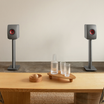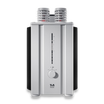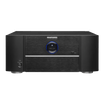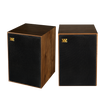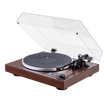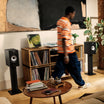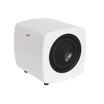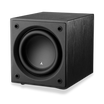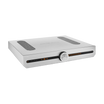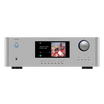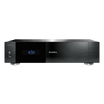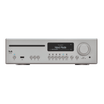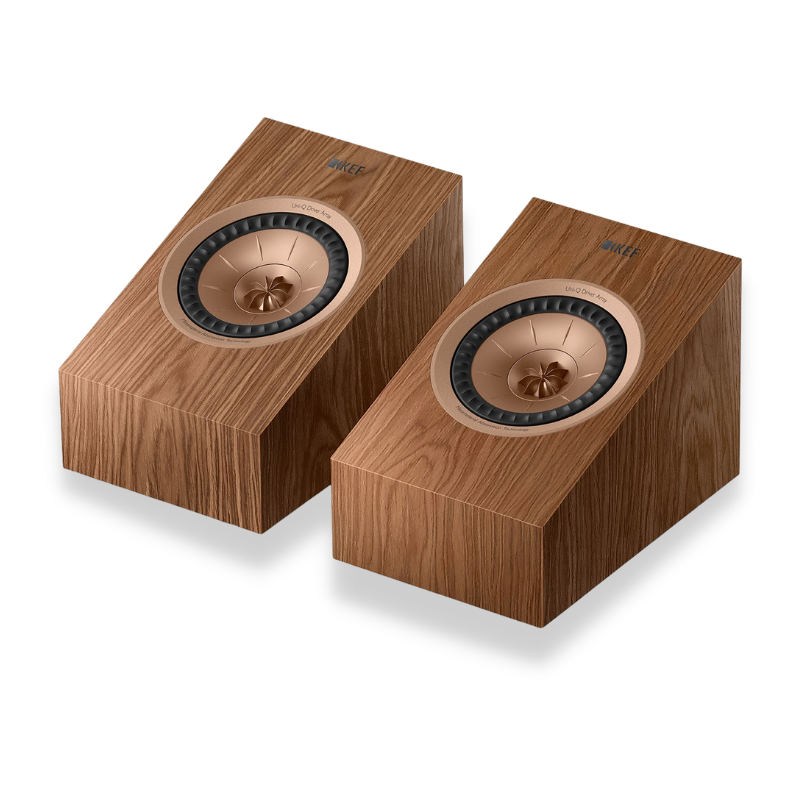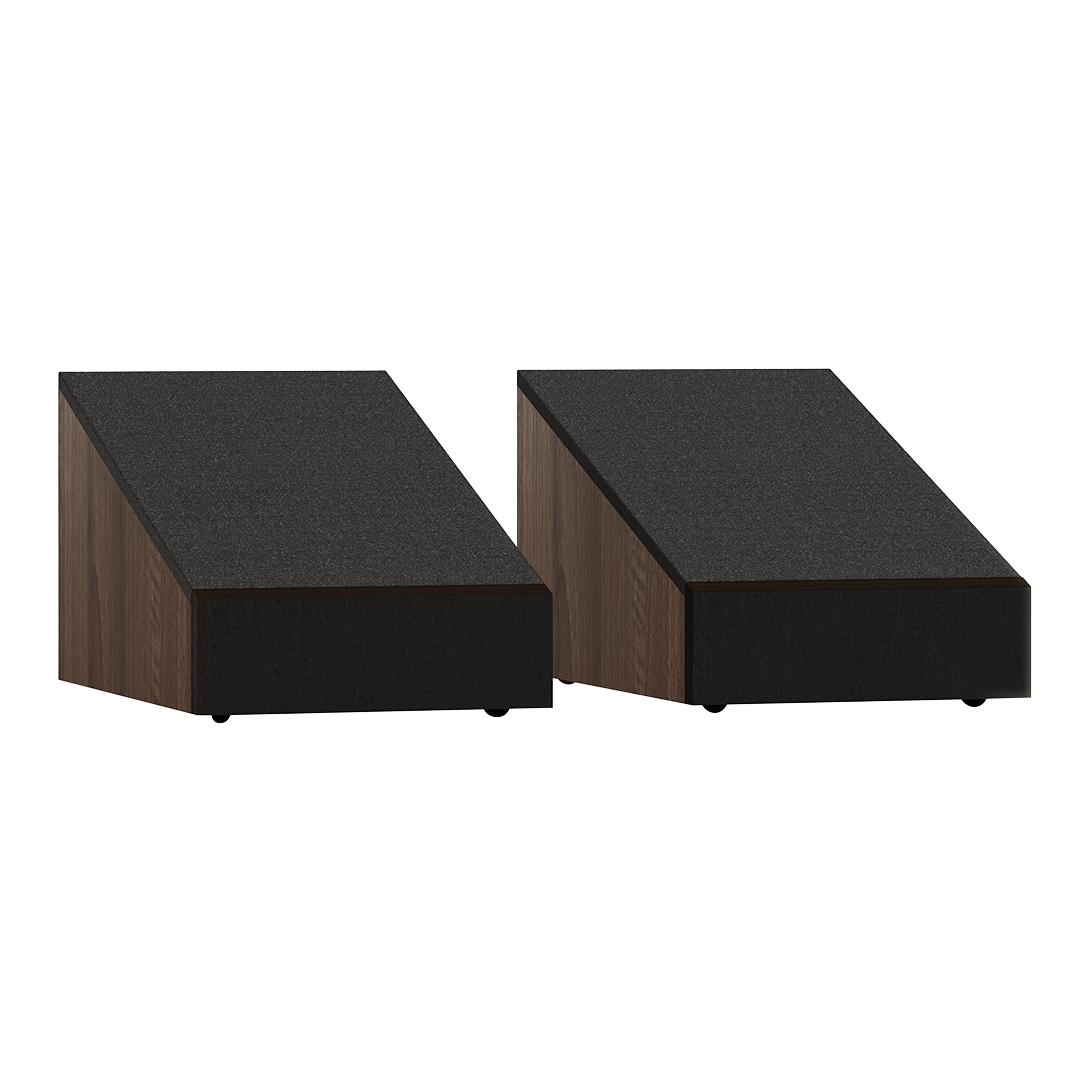
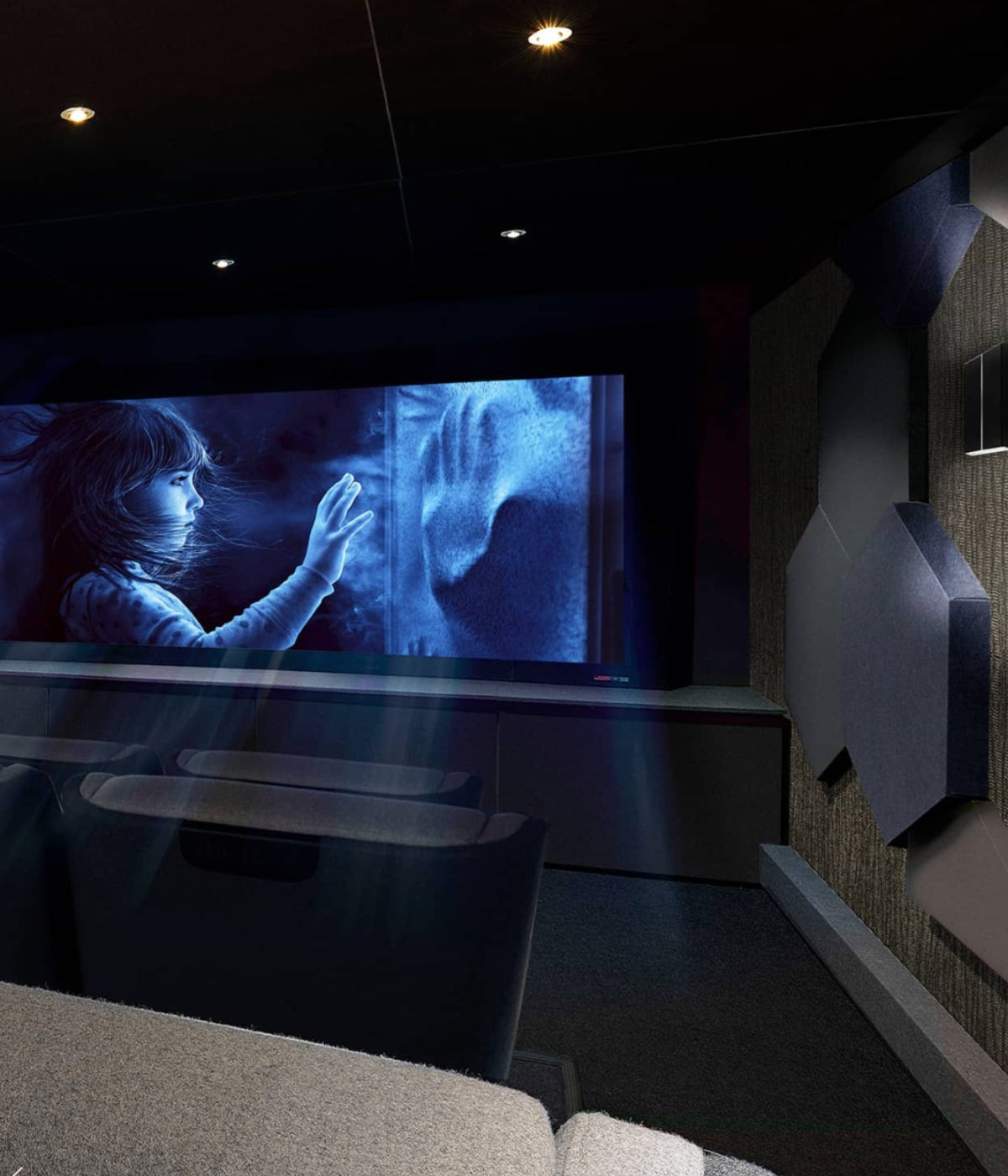
Dolby Atmos® Speakers
Filters
7 products
TELL ME MORE ABOUT
Dolby Atmos® Speakers
Dolby Atmos speakers represent a significant leap forward in home audio technology, providing an immersive, three-dimensional listening experience. Unlike traditional surround sound systems, Dolby Atmos introduces the concept of height... Read More
Dolby Atmos speakers represent a significant leap forward in home audio technology, providing an immersive, three-dimensional listening experience. Unlike traditional surround sound systems, Dolby Atmos introduces the concept of height channels, allowing sound to move freely in a three-dimensional space. This means you can hear sounds not only around you but also above you, creating a truly enveloping audio environment that brings movies, music, and games to life with unprecedented realism and clarity.
What Are Dolby Atmos Speakers?
Dolby Atmos speakers are advanced audio components designed to deliver an immersive, three-dimensional sound experience. Unlike traditional surround sound systems that operate on a horizontal plane, Dolby Atmos adds height channels, creating a soundscape that surrounds you from all directions, including above. This innovation allows for more precise placement of audio elements, making it feel as if you are truly within the environment, whether it's raindrops falling from the sky or a helicopter flying overhead.
These speakers work by incorporating upward-firing drivers or ceiling-mounted units that project sound towards the ceiling, which then reflects down to the listener. This technique simulates the vertical dimension of sound, adding a layer of depth and realism to your audio experience. Dolby Atmos speakers can be found in various configurations, from integrated units that include both traditional and height drivers to add-on modules that enhance existing speaker setups.
The key benefit of Dolby Atmos speakers is their ability to render audio objects with pinpoint accuracy. Sound designers can place individual audio elements anywhere in a three-dimensional space, allowing for a more dynamic and lifelike listening experience. Whether you're watching a movie, playing a video game, or listening to music, Dolby Atmos speakers elevate your auditory experience, making it richer and more immersive. They are compatible with many modern AV receivers and can be integrated into various speaker configurations, making them a versatile choice for any home theatre setup.
How to Choose the Best Dolby Atmos Speakers for Your Needs
Choosing the best Dolby Atmos speakers for your needs involves considering several key factors to ensure you achieve the optimal immersive audio experience. Here are some tips to guide you:
1. Room Size and Layout: The size and shape of your room significantly influence the type and number of Dolby Atmos speakers you'll need. Larger rooms may require more powerful speakers or additional units to ensure sound coverage. Consider ceiling height as well, as upward-firing speakers rely on ceiling reflections to create the height effect.
2. Speaker Configuration: Determine the ideal speaker configuration for your setup. Common Dolby Atmos setups include 5.1.2 (five speakers, one subwoofer, two height channels) and 7.1.4 (seven speakers, one subwoofer, four height channels). Ensure your AV receiver supports the desired configuration.
3. Type of Dolby Atmos Speakers: Choose between integrated Dolby Atmos speakers with built-in upward-firing drivers, separate height modules that sit on top of existing speakers, or ceiling-mounted speakers for a more discrete setup. Each type has its benefits, with integrated and height modules being easier to set up and ceiling-mounted speakers offering a more immersive Atmos experience.
4. Compatibility: Ensure the speakers are compatible with your existing audio equipment, particularly your AV receiver. Your receiver should support Dolby Atmos and have enough channels to accommodate your desired speaker configuration.
5. Budget: Set a budget and explore options within that range. While higher-end models offer superior sound quality and advanced features, there are excellent Dolby Atmos speakers available at various price points to suit different budgets.
By considering these factors, you can find the Dolby Atmos speakers that best match your needs, ensuring a high-quality, immersive audio experience in your home theatre.
What Are the Key Differences Between Different Types of Dolby Atmos Speakers?
Dolby Atmos speakers vary mainly in their design and installation method. Integrated Dolby Atmos speakers combine traditional and upward-firing drivers in one unit, simplifying setup. Height modules are add-on speakers placed atop existing speakers to create the height effect. Ceiling-mounted speakers provide the most immersive experience by projecting sound directly from above, but they require more complex installation. Additionally, some models are active (with built-in amplifiers) while others are passive (requiring an external amplifier). Understanding these differences helps you choose the right type for your room size, layout, and audio preferences.
Final Thoughts
Investing in Dolby Atmos speakers can significantly enhance your home theatre experience, providing an immersive, three-dimensional sound that brings movies, music, and games to life. By carefully considering factors such as room size, speaker configuration, type of speakers, compatibility, and budget, you can select the best Dolby Atmos speakers to meet your specific needs. Whether you opt for integrated units, height modules, or ceiling-mounted speakers, the key is to ensure a seamless and balanced audio setup.
Some Quick FAQ:
Do I need special content to use Dolby Atmos speakers?
Yes, to fully experience Dolby Atmos, you need content specifically mixed for Atmos, such as certain movies, TV shows, and games. Many streaming services, Blu-rays, and video games now offer Dolby Atmos soundtracks.
Can I use Dolby Atmos speakers with my existing sound system?
Yes, you can integrate Dolby Atmos speakers into your existing sound system as long as your AV receiver supports Dolby Atmos and has enough channels to accommodate the additional speakers.
What is the difference between Dolby Atmos and traditional surround sound?
Traditional surround sound systems deliver audio on a horizontal plane, whereas Dolby Atmos adds height channels, allowing sound to move in three-dimensional space. This creates a more immersive and realistic audio experience.
Are upward-firing Atmos speakers as effective as ceiling-mounted ones?
Upward-firing Atmos speakers are effective and easier to install, using ceiling reflections to create height effects. However, ceiling-mounted speakers provide a more direct and immersive experience, but require more complex installation.
How many Dolby Atmos speakers do I need?
The number of Dolby Atmos speakers you need depends on your room size and desired setup. Common configurations include 5.1.2 or 7.1.4, but you can add more speakers for larger rooms or more immersive sound.
Are there Dolby Atmos soundbars available?
Yes, there are soundbars with Dolby Atmos technology integrated, providing a more compact yet immersive audio solution for those seeking a streamlined setup.
NEED MORE GUIDANCE?
We are here to help
Check out some of our most commonly asked questions.
What do I need to play records?
Getting into vinyl? That’s awesome! We have some curated turntable Hi-Fi packs, with everything you'll need to get spinning right away. But if you want to build your own, read on for all the details.
First off, you'll need a turntable. It's the star of the show, so make sure it’s in good nick, with a decent cartridge and stylus (needle).
Next, there’s the phono preamp. Some turntables or amplifiers come with one built-in, but if yours doesn’t, you’ll need one as a bridge between your turntable and amplifier or powered speakers.
For the sound output, you’ve got two options. You can go with a traditional setup involving an integrated amplifier to take the signal from your phono preamp and power your passive speakers. Alternatively, you can opt for powered speakers, which have the amplifier built in – a handy all-in-one solution.
Speaking of speakers, good ones are a must for that rich, warm vinyl sound we all love. Whether you go for bookshelf or floorstanding speakers (or powered ones) depends on your space and budget.
And there you go! With these essentials, you’ll be ready to dive into your vinyl collection and enjoy that classic sound.
What can a wireless speaker do?
Wireless speakers are a game-changer for how you enjoy music and audio around the house. First off, they let you stream music wirelessly from your phone, tablet, or computer, so no more messing about with cables. You can easily play tunes from Spotify, Apple Music, Tidal or whatever streaming service you fancy.
If you’re into having music everywhere, many wireless speakers offer multi-room audio. You can sync them up to play the same music in every room or control what plays in each room individually, perfect for parties or just keeping the vibes consistent throughout your home.
Voice control is another brilliant feature. Many come with built-in assistants like Alexa, Google Assistant, or Siri. You can control your music with just your voice, ask for the weather, set reminders, or even control other smart home devices.
Sound quality? These little gadgets often pack a punch, delivering high-quality audio that can rival traditional wired setups. Some even offer 360-degree sound, filling the room with music from every angle.
In a nutshell, wireless speakers bring flexibility, convenience, and top-notch sound to your audio experience, making them a fantastic addition to any home. Whether you’re hosting a party, working from home, or just chilling out, they make listening to music a breeze.
How do you choose the right speaker & amplifier combination?
Deciding on a good speaker and amplifier combination is like putting together a perfect wine and cheese pairing—it’s all about balance and harmony. Here’s a conversational guide to help you through it:
First, consider your speakers. These are your main players, so you want to choose ones that fit your space and listening preferences. If you love deep bass and have a bit of room, floorstanding speakers might be your go-to. For smaller spaces or a more subtle look, bookshelf speakers are fantastic.
Now, onto the amplifier. This is where things get interesting. Your amp needs to match your speakers in terms of power and impedance. Check the wattage ratings on your speakers—your amplifier should provide enough power to drive them properly. Too little power and you’ll be missing out on sound quality; too much, and you risk damaging your speakers.
Next, think about the impedance (measured in ohms). Your amp and speakers should be compatible here too. Most speakers are rated at 8 ohms, but some can be 4 or 6. Make sure your amplifier can handle the impedance of your speakers to avoid any performance issues.
Another important factor is the type of sound you’re after. Some amps are known for their warm, rich tones, while others might be more neutral or even slightly bright. It’s a bit like choosing between a vinyl record and a digital stream or CD —each has its own charm. If possible, listen to different amp and speaker combinations to see what sounds best to your ears.
If purchasing online, note that at LE, we have made recommendations on speaker & amplifier combinations that we think sound wonderful together within each product listing.
Don’t forget about connectivity and features. Modern amplifiers often come with a host of options like Bluetooth, Wi-Fi streaming, and various inputs for all your devices. Make sure your amp has the inputs you need for your turntable, CD player, or streaming device.
Finally, consider your budget. Great sound doesn’t always mean breaking the bank, but be prepared to invest to get a quality setup that will last.
In the end, trust your ears. Listen to a few combinations if you can, and go with what makes your music sound the best to you.
Why do I need a headphone amplifier?
If you’re diving into the world of high-quality audio, a headphone amplifier can be a real game-changer. Think of it like this: most standard devices, like your smartphone or laptop, just don’t have the oomph needed to drive headphones properly. They might get the job done, but they won’t do your music justice. A headphone amp gives your headphones the power they need, ensuring you get the volume and clarity that really makes your music shine.
It’s not just about making things louder, either. A good headphone amp can significantly improve sound quality. You’ll get clearer highs, richer mids, and tighter bass, making your favourite tracks sound even better. You might notice details you’ve never heard before, especially if you’re listening to high-resolution audio files.
Premium headphones often have higher impedance, meaning they require more power than your typical audio source can provide. A headphone amp can handle this with ease, making sure your headphones perform at their absolute best. Plus, many amps come with extra features like bass boost, equalisation, and gain control, giving you more ways to tweak the sound to your liking.
In short, if you’re passionate about your music and want to hear it in the best possible way, a headphone amplifier is definitely worth considering. It’s all about unlocking the full potential of your gear and really getting the most out of your listening experience.
Where should I start when designing a home cinema?
Designing your own home cinema? That's awesome! We are here to help walk you through the process, but as a starting point, here’s what we would recommend and where to kick things off:
First up, pick your spot. For most people this is your existing lounge room, but if you have an underused garage, or spare bedroom, then you have an opportunity to create your very own true Home Cinema experience. Find a room that’s just right—not too cramped and ideally away from noisy areas. This sets the stage for that immersive movie experience.
Next, think about how you’ll set things up. Plan where your seats will go and where to place your projector screen for the best view from every angle. It’s all about creating that comfy, cinematic vibe.
Sound matters, too. Consider if you want a wireless system for simplicity or a full surround sound speaker system with AV receiver for that surround-sound thrill. Think about soundproofing or adding acoustic panels or thick carpets to really amp up the audio quality of the room.
Now, onto the screen. Decide between a crisp TV or a projector setup, depending on your room size and personal style. Maybe even throw in some dimmable lights or smart lighting to set the mood just right.
And hey, don’t forget comfort. Invest in plush cinema seating and think about the décor—whether it’s movie posters, blackout curtains, or popcorn machine & bar area, whatever gives you that true cinema feel.
Lastly, tech it up! Make sure everything—from your Blu-Ray player & Apple TV to your gaming consoles—is set to sync perfectly with your new setup.
With these steps, you’re on your way to creating a home cinema that’s not just a space, but an experience. Enjoy movie nights like never before!


